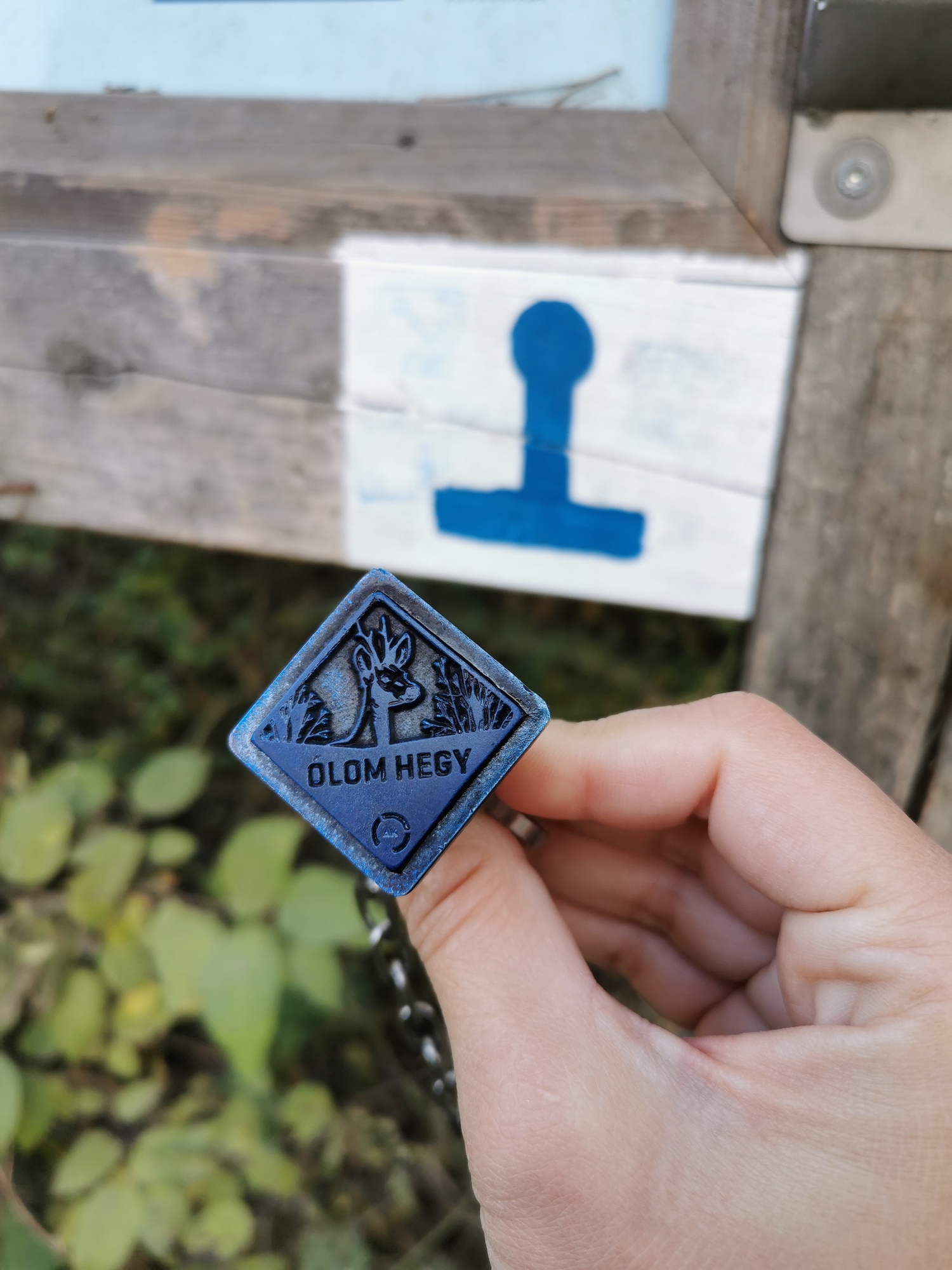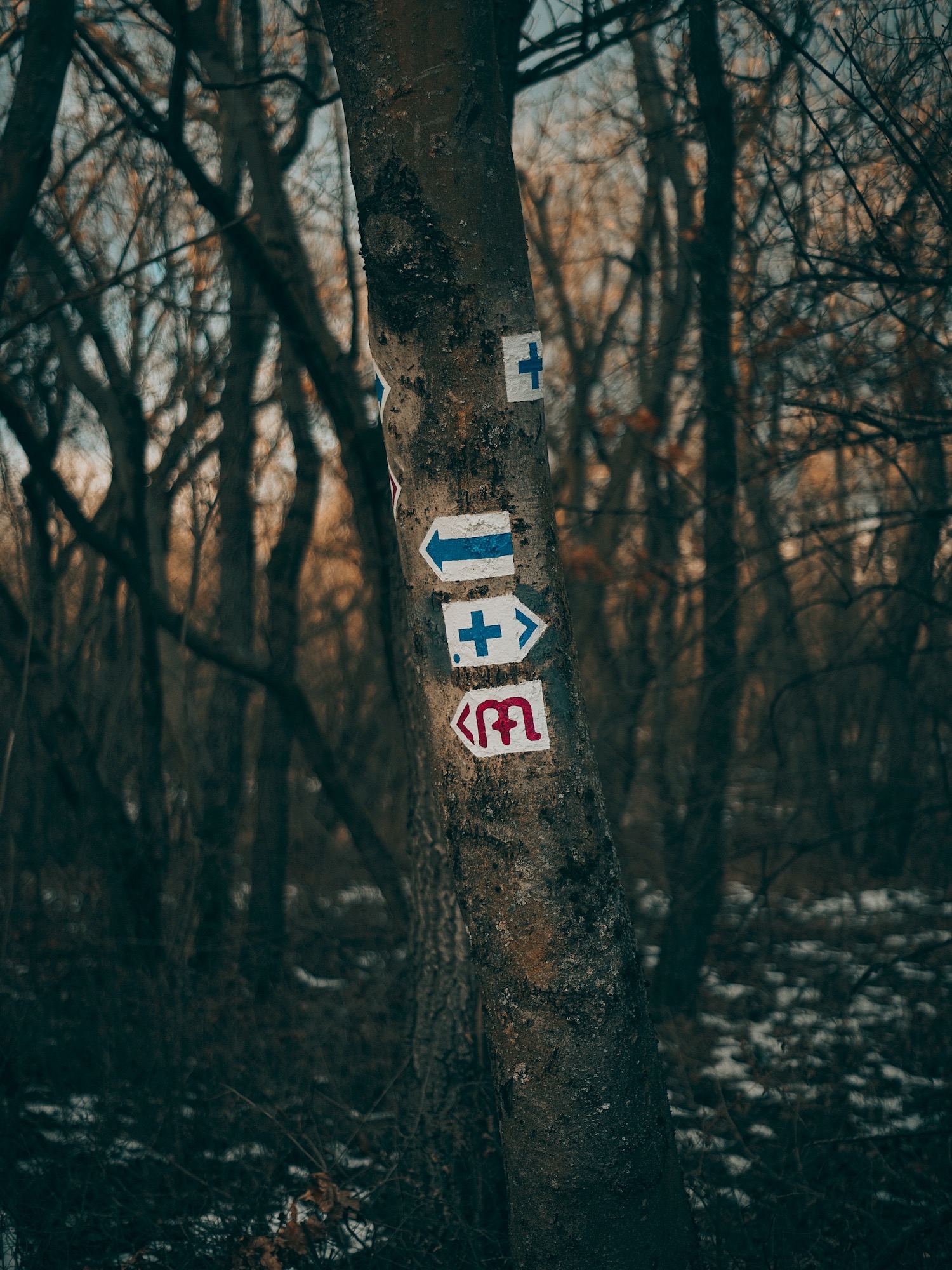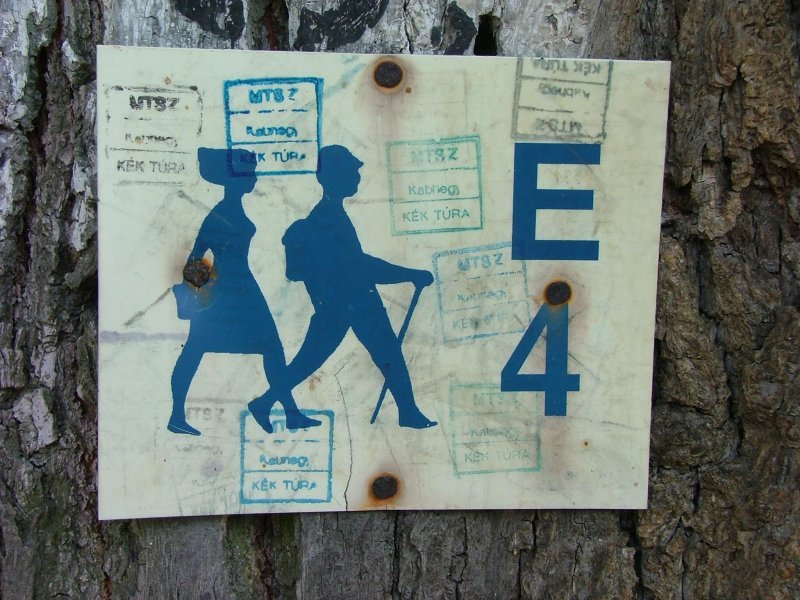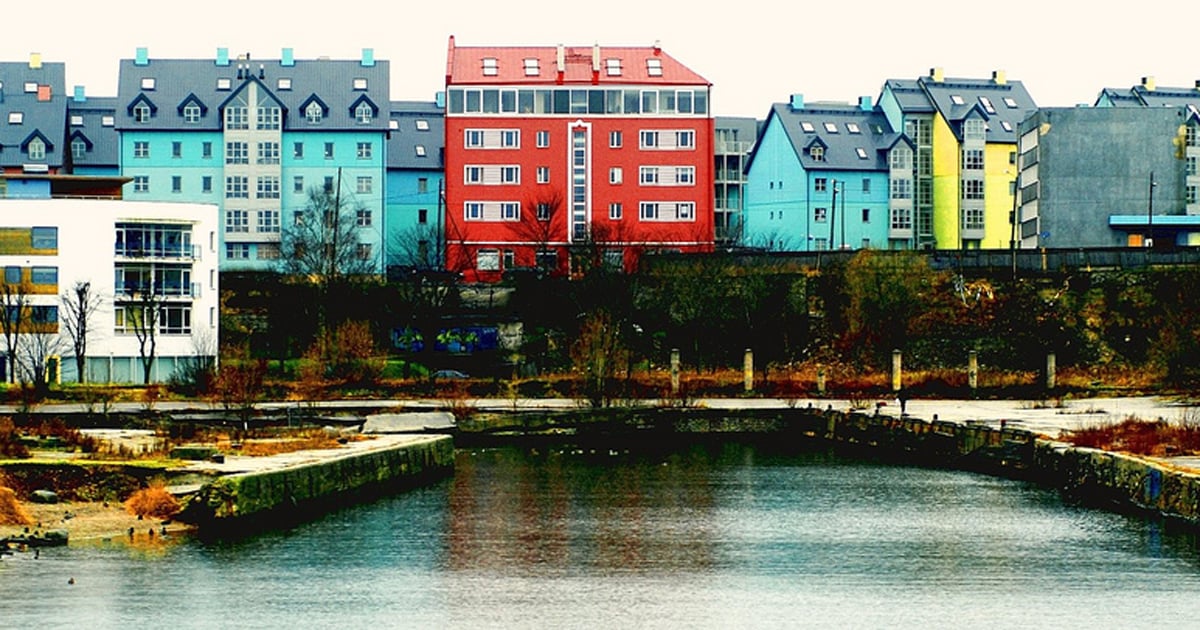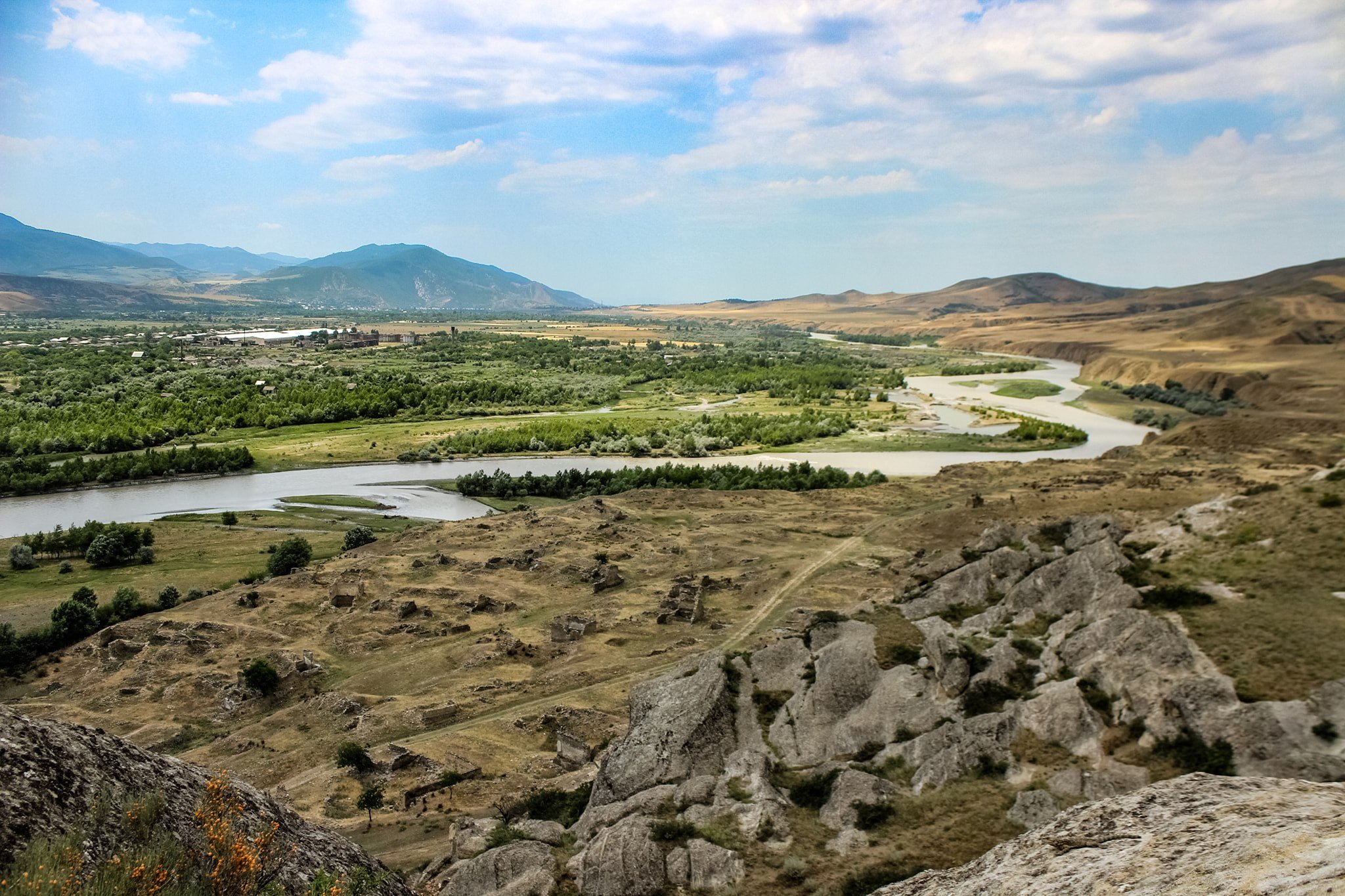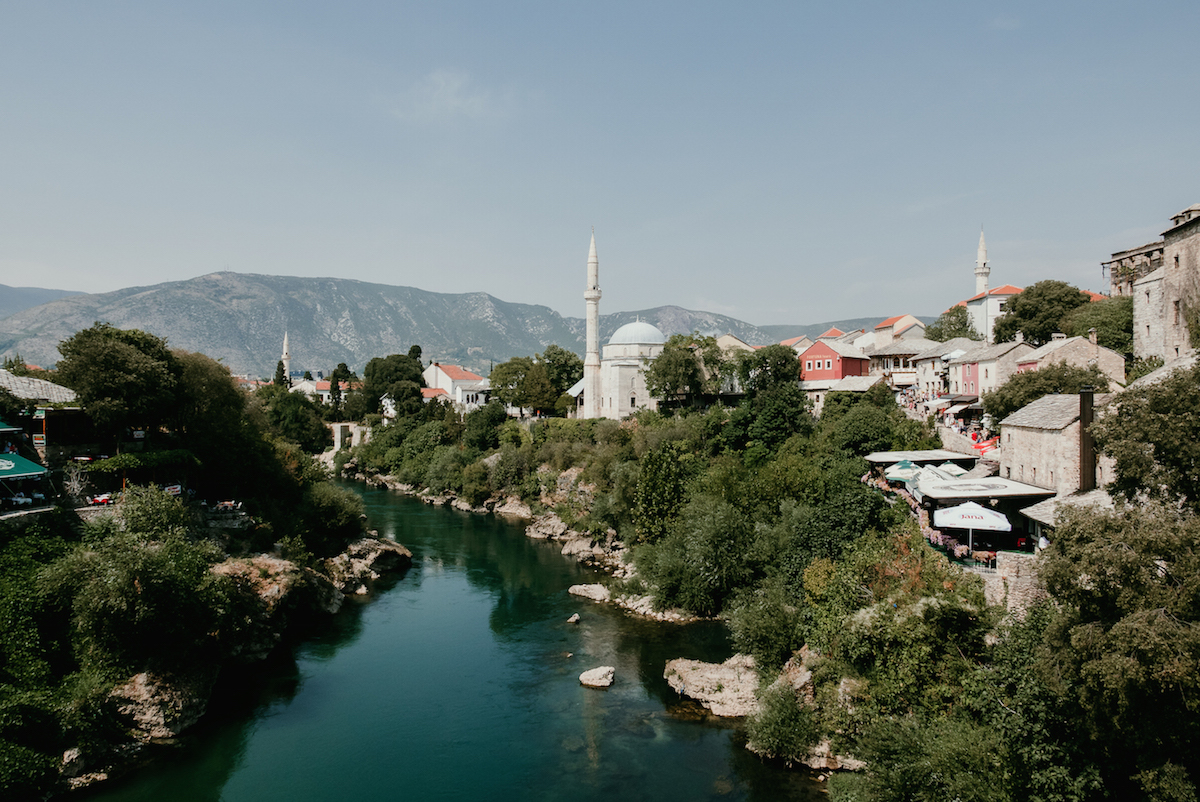How a hike ruled by socialist-era bureaucracy became a Hungarian rite of a passage
The thousands of hikers who brave Hungary’s Blue Trail each year must face down unexpected obstacles, a bureaucratic, socialist-era stamp system, and a litany of rules. Which begs the obvious question: why bother at all?
Stretching 1,170 kilometres — from the Hungarian-Austrian border in the west, to the border with Slovakia in the north-east — Hungary’s National Blue Trail is more than a mere nature walk. Almost every Hungarian has heard of it, and most of us have even walked at least one of its 27 stages on school outings. The Blue Trail, as it is commonly known, is the line of the heart of the country, the living essence of local natural, cultural, and architectural beauty.
Unlike most long-distance hikes, the Blue Trail offers a prize for those who walk its entire length. The concept is comparable only to the pilgrimage of the Camino de Santiago, but without its religious import. For a beginner hiker, it is a mammoth undertaking: along the trail as a whole there is a compound elevation gain of 31,435 metres — the equivalent of climbing Mount Everest over three times.
Gerecse mountains, near Péliföldszentkereszt. Image: Hóbor István/Wikimedia Commons under a CC licence
If hikers wish to claim their prize, then the rules, unchanged for nearly 70 years, seem to be simple enough. Anyone who wishes to officially complete the hike must obtain a booklet from the Hungarian Ramblers Association, and use it to collect all 151 stamps that have been placed along the route in pubs, railway stations, and near local sights. When all stamps have been collected, the booklet must be submitted to the Association for inspection, which routinely takes 2-3 weeks. Upon successful delivery of proof of completion, a certificate and badge are issued.
It sounds like fun. In reality, however, aspirants need to be prepared for all eventualities: unannounced hunting parties and road closures on the trail, missing stamps, or new ones added to the route, but not to the booklet. There are colourful stories about railway clerks who refuse to hand over the stamps kept inside their stations unless a hiker agrees to buy a train ticket home. One Romani chief keeps a stamp in his family home, fed up with its repeated theft. Some stamps lie forgotten in pubs, seemingly closed forever. Which begs the obvious question: Why do people take such hardships on themselves to obtain a badge at the end if it all?
Flick through the Ramblers Association newsletter and things only get worse. A series of blog posts — Observations of a Stamp-Controller — dissect the trivial mistakes of hikers striving to complete the Blue Trail challenge. It is filled with alienating expressions and complicated language. There are rules forbidding “completion by points of tangency”, guidelines for “interrupting the route”, and diktats on the documentation of “route-following”.
As someone who has long believed that walking should be about experiencing freedom, my own romantic ideals have long been at odds with the strict set of rules for the Blue Trail — and I wasn’t certain they could be reconciled. The Ramblers Association rules seemed to be another cog in a game of bureaucracy, that special Eastern European pastime. But not everyone agrees.
“There was no question. This is the proper way of doing the Blue Trail,” Zoli Harsányi, a thirty-something corporate manager tells me with open, sunny conviction when I ask him why he chose to collect the route’s many stamps. “This way you keep memories, too.” He leafs through his booklet, occasionally pointing out a special stamp, humming contentedly.
Castle ruins along the Blue Trail. Image: handras404-Indafotó/Wikimedia Commons under a CC licence
For many hikers, the stamp system is the core feature of the Blue Trail, and they want to be part of a tradition. Originally established amidst social and political turmoil in 1938, the Blue Trail was the first official long-distance hike in Europe. It survived the Second World War, and saw overnight success when the railway workers’ Lokomotív Tourist Association started the stamp system in 1952, in a bid to give walking a more organised framework and incentivise workers to spend time in nature. In less than a decade, the popularity of the once modest hikers’ movement grew way beyond Lokomotív’s organisational capacity, and was taken over by the Hungarian Ramblers Association.
Indeed, this remarkably old concept of “gamification” gets addictive, says Orsi Szombati, a Budapest-based travel blogger. “I became really engrossed in collecting them. You look at your booklet and the growing collection of stamps, and you know you’re progressing.” Orsi completed the Blue Trail and both of its extensions in Hungary’s Alföld and Dél-Dunántúl regions within a year. “I was a bit anxious about my stamps not coming out right,” she laughs. Zoli Harsányi shared the same fears: “Some old stamps were so worn, they became illegible. After 20 or so test runs on scraps of paper, I mostly managed to get a clear mark for my booklet. I wanted to be extra meticulous. We work together to try and decipher one of these old stamps. It should read “Szarvaskő,” and it probably did, back in the 1960s. “The controllers knew the old stamps by heart,” Harsányi adds. “They’d never disqualify you just for a few botched marks.”
Gábor Csernus-Lukács is one of those volunteer stamp controllers at the Hungarian Ramblers Association. He is a passionate hiker who has walked the route at least a dozen times. He knows every little detail about those old stamps. Now, he spends a few afternoons each week with his three colleagues inspecting submitted Blue Trail booklets. In Observations of a Stamp-Controller, he shares his wealth of information with others. “I absolutely resent returning a booklet for trivial mistakes,” he says, “missing dates, missing stamps, and the like.” For the controllers, dating the stamps, or the documentation of route-following is vital information. Hikers do not have to complete the Blue Trail in a prescribed order, nor is there a set timeframe for completion. This means that a precise date log is the only way to prove that each section between each checkpoint had been walked. If a would-be finisher has collected four 70-kilometre stages in a single day? That’s not hiking. Only biking, off-roading, or ultra-running would justify such a pace, and none of these are permitted. Interrupting the route, or when the hiker abandons the trail to go home or spend the night, must be documented with the corresponding dates. Some hikers help controllers make sense of their brochures by attaching spreadsheets.
Of course, this kind of set framework is an open invitation for cheating. Csernus-Lukács describes a typical scenario: drive-by stamping, or completion by points of tangency. A car might drive along a high street until a young woman in heels gets out, rushes to the local pub with 20 booklets, and gets them all stamped at once. “There is absolutely no merit in getting the badge this way,” says Csernus-Lukács. “And there is nothing I can do about it. If I meet such people on the trail, I can try reprimanding them, to no effect.” Most errors, however, have nothing to do with ulterior motives, but result from general ignorance. In these cases, officials will give hikers a chance to fill in gaps. “Beginners tend to forget that the map and booklet are mere snapshots. They expect reality to conform to them. The Hungarian countryside changes rapidly, obviously no printed map can keep up with that,” Csernus-Lukács says. “They need to understand this and plan better.”
The view from Füzér Castle. Image: Wikimedia Commons under a CC licence
And there are a lot of beginners. New funds allowed serious improvement work to begin on the trail in 2017. As a result, 2019 was a record year with 404 finishers, compared to 37 in 1995, an all-time low. The Covid-19 pandemic also gave the Blue Trail another significant boost: the Association sold 26,233 booklets in 2020, compared to 15,000 in 2019. 2021 was a record-breaking year: 584 hikers finished the Blue Trail, a 50 per cent increase compared to 2020.
But there lies something intangible beyond the stamp book, which begins to take shape as I talk with Blue Trail finishers. The alluring combination of outdoor activity and the ever-changing land spurns them not only to hike the Blue Trail, but to constantly return to it. “It is never dull,” says Csernus-Lukács, a characteristic wistfulness colouring his voice. “Changing the direction of the walk, or just hiking in different seasons, it always gives you something marvellous and new. Take the Badacsony [region], for example: it’s very different in the summer, when Hungarians are basking at Balaton Lake anyways, and so quiet in the winter when no one is around.”
For Orsi Szombati and Zoli Harsányi too, the enchantment with this route is powerful and lasting. With it, they have found both escape and confrontation, their experience rich and melancholy. “It becomes a way of life. One will consciously seek out moments of calm and quiet in nature. A whole new world reveals itself out there as we walk,” Szombati says. “I realised my senses heightened: you see and hear more; birdsong, the rustle of the undergrowth as roe deer crash through it. I saw the country with new eyes, found places I would have never thought existed so near.” Harsányi echoes the sentiment. For him, meeting inhabitants of tiny villages was momentous: talking to them, getting a glimpse of their lives and hopes. “There is always someone out there who will help if anything happens,” he says. The Blue Trail encapsulates an escape from everyday drudgery, while rediscovering rural life in Hungary’s forgotten corners. Between these points lies a new kind of self-reflection.
Finally, realisation dawns on me. Collecting stamps on a walk may contradict my lofty ideals of rambling, but to others it is an essential part of an adventure. The stamp booklet is more diary than mere proof of completion: a testament of progress through time and an ever-changing countryside. A story captured in stamps. Some booklets go beyond that, containing short written entries, photos, and other memorabilia — cherished keepsakes and a source of inspiration hikers are anxious not to part with. And those who hiked the trail once, will return to its striking vistas, seeing a world ever on the verge of vanishing — and there is nothing bureaucratic about that.
